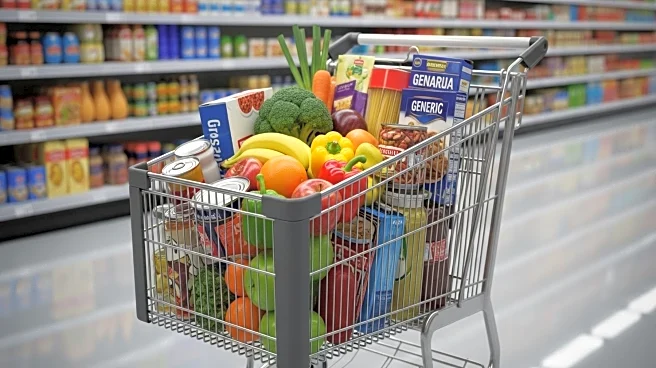What's Happening?
ShipMatrix, a logistics analysis firm based in Warrenville, Pennsylvania, has released its 'Parcel Market Forecast for Peak 2025,' predicting a 5% increase in parcel deliveries during the peak season. This growth is attributed to an additional shopping day compared to 2024. Despite the anticipated rise in volume, shippers are expected to face higher surcharges, effective from October 27. The forecast highlights a 33% increase in FedEx Ground surcharges and a 60% increase for UPS Ground, aligning their charges. FedEx Ground Economy and UPS Ground Saver will see increases of 16% and 60%, respectively. The USPS, while maintaining lower surcharges, claims to have the capacity to handle 85 million packages per day, though demand is not expected to exceed 40 million. The forecast suggests that FedEx and Amazon may see volume increases of 5%-8%, while UPS and USPS volumes are expected to remain flat.
Why It's Important?
The anticipated increase in parcel volumes and surcharges during the 2025 peak season reflects ongoing challenges in the logistics industry, including capacity constraints and cost pressures. Higher surcharges could impact retailers and consumers, potentially leading to increased shipping costs during the holiday season. This situation underscores the need for logistics companies to balance capacity and demand while managing operational costs. The forecast also suggests that the Big 3 carriers—FedEx, UPS, and USPS—may need to reconsider their surcharge strategies to regain lost volume in future peak seasons. The dynamics of the parcel market are crucial for e-commerce and retail sectors, which rely heavily on efficient and cost-effective shipping solutions.
What's Next?
Looking ahead, the logistics industry may see adjustments in surcharge strategies as carriers aim to optimize their operations and regain volume. The possibility of applying surcharges selectively during high-demand periods, such as Cyber Week and Christmas Week, could be explored. Additionally, the ongoing evolution of consumer shopping habits, influenced by economic factors like tariffs and inflation, will continue to shape the parcel market landscape. Stakeholders in the logistics and retail sectors will need to remain agile and responsive to these changes to maintain competitiveness and meet consumer expectations.










